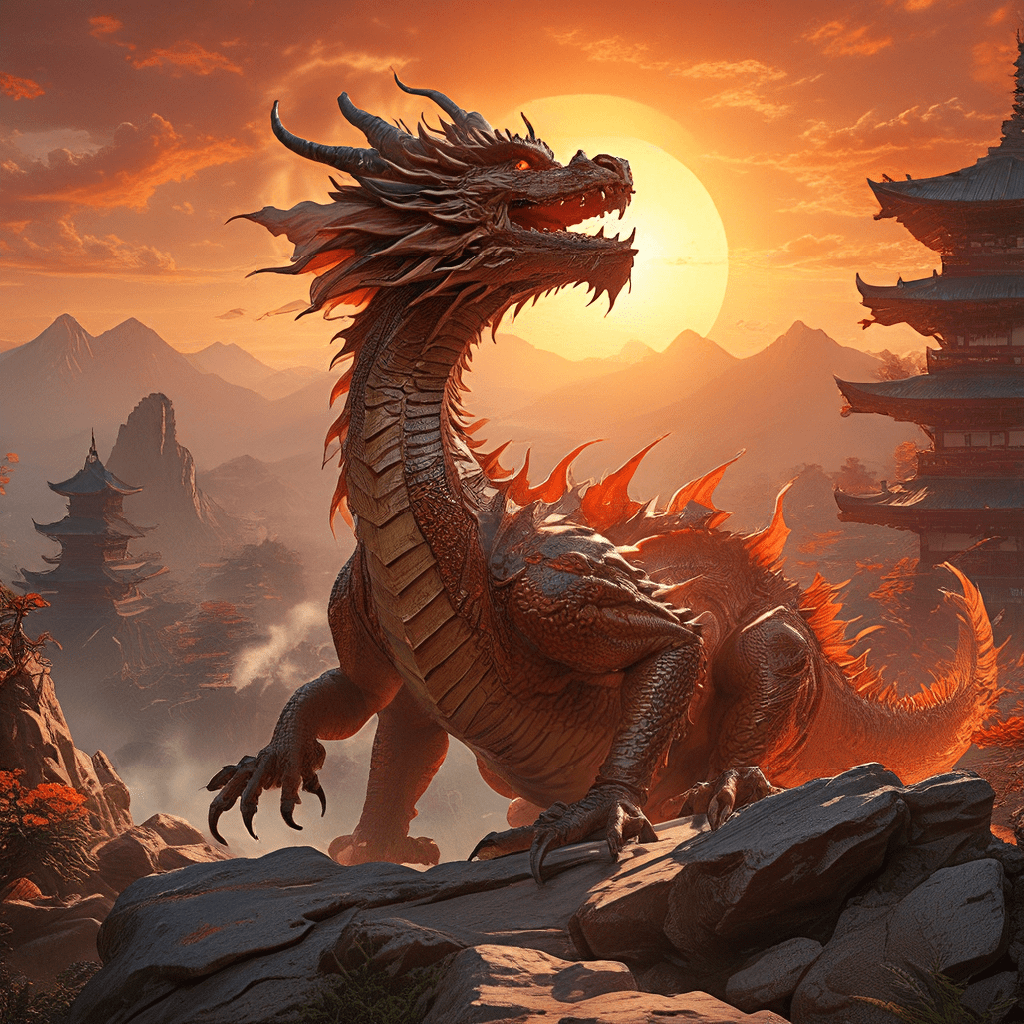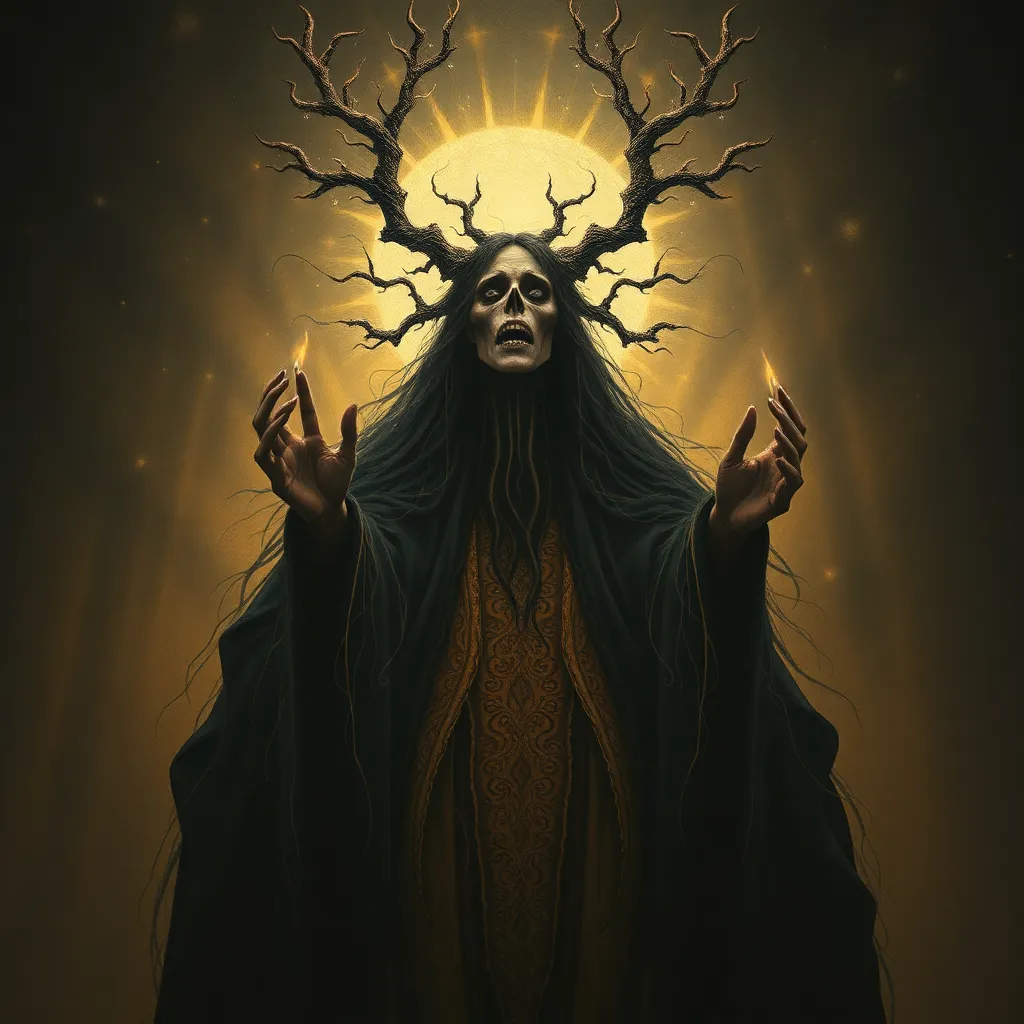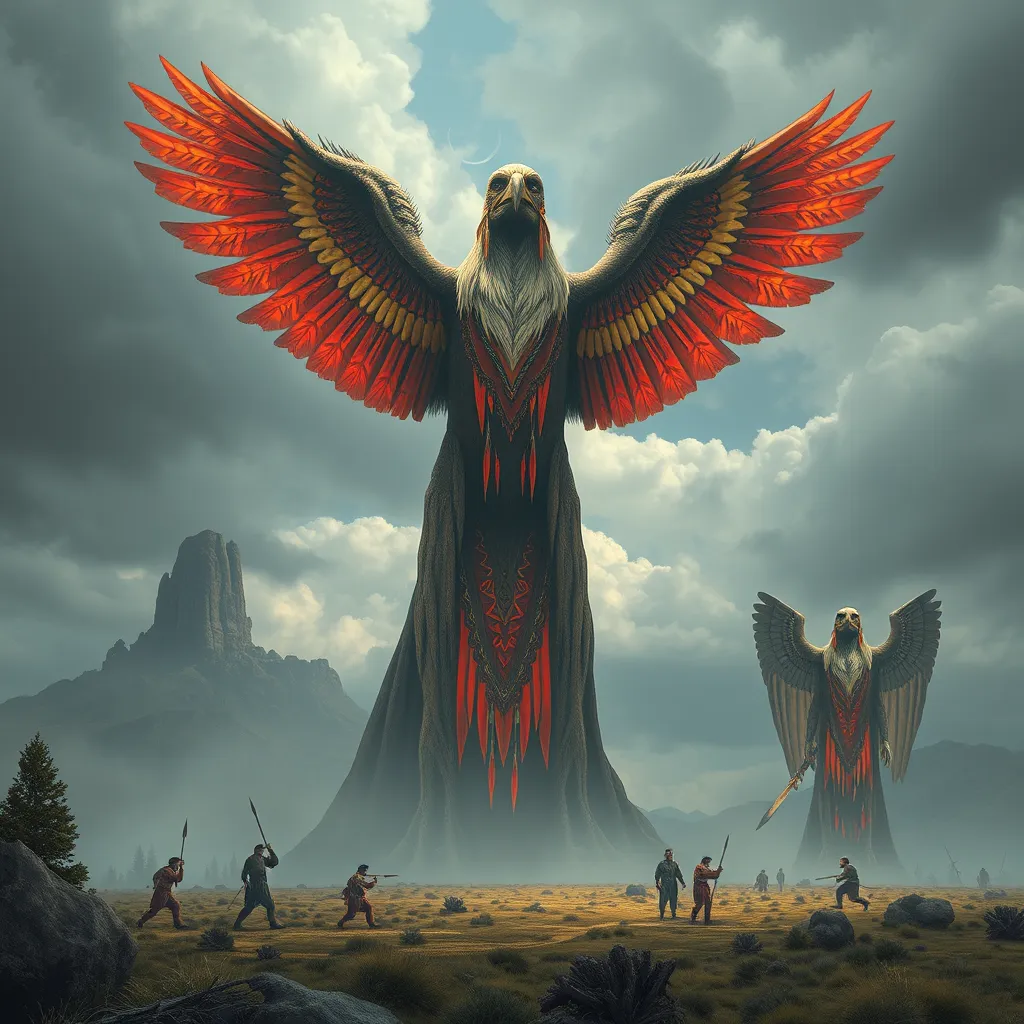The Realm of Ryū: Dragons in Japanese Mythology
Dragons, those mythical creatures of legend and lore, have captivated the human imagination for centuries. In the rich tapestry of world mythologies, dragons take on diverse forms and roles, embodying both fear and fascination. Japan, with its ancient traditions and vibrant culture, is no exception. The realm of Ryū, as Japanese dragons are known, is a captivating world of powerful deities, ancient legends, and enduring symbolism.
From the misty mountains to the churning seas, Japanese dragons have woven themselves into the fabric of the nation’s folklore, art, and spirituality. These serpentine beings are not just monstrous beasts, but also powerful deities, protectors, and symbols of strength, wisdom, and the very essence of nature.
The Ryū are integral to understanding the depth and richness of Japanese mythology, offering a glimpse into the beliefs and values that have shaped the Japanese spirit over millennia. Their presence is felt in Shinto shrines, ancient temples, and the enduring artistic traditions of the Land of the Rising Sun.
From the Depths of the Sea: The Origins of Japanese Dragon Mythology
The origins of Japanese dragon mythology are deeply rooted in the country’s natural landscape and its connection to the sea. The Japanese archipelago is comprised of a chain of islands surrounded by vast oceans, a landscape that has shaped the country’s culture and mythology.
The sea, in Japanese mythology, is a source of both life and mystery. It is a realm where spirits dwell, where storms rage, and where creatures of legend, like the Ryū, make their home. The origins of the Ryū are often traced back to the ancient belief that the sea was ruled by powerful deities, known as the Dragon Kings.
These deities held dominion over the oceans, controlling the tides, winds, and the very life that flowed within them. The Ryū were also seen as embodiments of the ocean’s power and the force of nature itself. This association with the sea, and its potent energy, helped shape the Ryū into a symbol of power, wisdom, and spiritual strength.
The Ryū: More Than Just Fire-Breathing Beasts
While Western dragons are often depicted as fearsome fire-breathing monsters, Japanese Ryū are more nuanced. They are powerful and majestic, yet they also possess a spiritual quality. Rather than terrifying beasts, the Ryū are often associated with the elements of nature, particularly water and rain.
The Ryū are depicted with powerful, serpentine bodies and scales shimmering like jewels. They have long, flowing whiskers and often possess claws, resembling those of a tiger. However, unlike their Western counterparts, they lack wings. Instead, they are often portrayed with a powerful serpentine form, capable of moving with swift grace both on land and in the sea.
This serpentine form signifies their connection to the Earth’s natural forces, specifically water, which flows and ebbs like a serpent. Their ability to move between the land and the sea, and their mastery of the natural elements, makes them powerful and wise creatures.
The Dragon as Guardian and Protector: A Symbol of Strength and Power
The Ryū are not just powerful creatures but also protectors. They are seen as guardians of sacred sites, temples, and shrines, ensuring the safety of those who dwell within their domain. Their presence is a symbol of strength and power, warding off evil spirits and protecting the land from harm.
Their connection to the sea, which is a source of life and sustenance, further reinforces their role as protectors. The Ryū are seen as guardians of the oceans, ensuring the abundance of fish and the safety of those who venture onto the water.
This aspect of the Ryū speaks to the Japanese reverence for nature and the belief that the natural world is imbued with spiritual energy. The dragon’s power and wisdom are not meant to be feared but respected and revered, a testament to the delicate balance between humans and the forces of nature.
Dragon Deities: Divine Beings with Divine Powers
The Ryū are not merely mythical creatures but also divine beings. They are revered as deities, embodying the power and majesty of nature. Some Ryū, like Ryūjin, the Dragon King of the Sea, are considered central figures in the Shinto pantheon, worshipped for their benevolent influence over the seas and the bounty they provide.
These dragon deities are often depicted in artwork and religious ceremonies, symbolizing the harmony between humanity and the natural world. They are viewed as benevolent forces, offering blessings and protection to those who respect them and the natural world they embody.
The Ryū, as deities, are not simply creatures of myth but powerful entities with the potential to influence human affairs. Their presence in Japanese mythology is a testament to the deep connection between the spiritual and the natural world, and their influence continues to be felt in contemporary Japanese culture.
Ryūjin: The Dragon King of the Sea
In the vast and mysterious realm of Japanese mythology, Ryūjin, the Dragon King of the Sea, holds a place of paramount importance. He is a central figure in the Shinto pantheon, revered as a powerful deity who controls the tides, storms, and the abundance of the ocean.
Ryūjin is often depicted as a majestic dragon, with a serpentine body, long flowing whiskers, and scales shimmering like jewels. He is said to reside in a magnificent underwater palace, surrounded by countless fish, coral reefs, and other creatures of the sea.
His domain extends over all the waters surrounding Japan, and his influence is felt in everything from the daily tides to the bounty of the fishing grounds. He is both revered and feared, a reminder of the power and unpredictability of the sea.
Ryūjin is associated with various legends and tales, highlighting his power and influence. In one famous story, he bestows the magical jewel “Magatama” to Princess Toyotama-hime, the daughter of the sun goddess Amaterasu. This jewel symbolizes the power and beauty of the sea, and it becomes a vital part of the imperial regalia of Japan.
Ryūjin’s role as a deity extends beyond controlling the sea. He is also associated with rain, fertility, and the abundance of nature. His presence in the pantheon reflects the deep connection between the Japanese people and the sea, a source of life, sustenance, and spiritual wisdom.
The Eight Dragon Kings: Guardians of the Four Directions
Beyond Ryūjin, the Dragon King of the Sea, Japanese mythology also features a group of eight powerful dragon deities, known as the Eight Dragon Kings. These dragons are said to rule over the four cardinal directions – north, south, east, and west – each representing a specific element and presiding over a particular area.
These dragon kings are not only powerful guardians, but they are also associated with specific aspects of nature. For example, the Dragon King of the East is associated with the element of wood and is said to be responsible for the growth of vegetation and the abundance of the spring season.
The Dragon Kings are often depicted in art and literature, representing the interconnectedness of all things in nature. Each dragon embodies a unique aspect of the natural world, showcasing the balance and harmony that exists between the elements.
The Eight Dragon Kings are revered for their power and wisdom, and they serve as protectors of the land and the people. Their presence throughout the Japanese archipelago symbolizes the interconnectedness of nature and the harmony that exists within the natural world.
Dragon Transformations: The Power to Shape-Shift
One of the most fascinating aspects of Japanese dragon mythology is the Ryū’s ability to shape-shift. They are often depicted as powerful, serpentine beings, capable of transforming into human form at will. This ability to move between the physical and spiritual realms adds to their mystique and makes them even more powerful and intriguing.
The ability to shapeshift is often associated with the dragon’s wisdom and their deep connection to the natural world. It symbolizes their ability to move effortlessly between different realms, embodying the fluidity and adaptability of nature itself.
This transformative power is often seen in various stories and legends, where the Ryū take on human forms to communicate with mortals, offer guidance, or bestow blessings. Their ability to shapeshift allows them to bridge the gap between the human world and the divine, making them both powerful and enigmatic figures.
The Influence of Chinese Dragon Mythology
While Japanese dragon mythology is unique in its own right, it has been influenced by the rich traditions of Chinese dragon mythology. Similar to their counterparts in Chinese folklore, Japanese Ryū are often associated with water, rain, and the power of nature. They also share the ability to shapeshift and are often depicted with serpentine bodies and intricate scales.
However, Japanese dragons have distinct characteristics that set them apart from their Chinese counterparts. They are typically smaller and more slender, lacking the whiskered snouts and claws that are common in Chinese dragon depictions.
Despite these differences, the influence of Chinese dragon mythology is evident in Japanese art, literature, and the overall imagery and symbolism associated with Ryū. The presence of these majestic creatures in both cultures highlights the vast interconnectedness of ancient myths and traditions, demonstrating how ideas and symbolism can transcend geographical boundaries.
Modern Representations: Dragons in Japanese Culture and Art
The legacy of the Ryū, the Japanese dragon, continues to be felt in modern Japanese culture and art. They are prevalent in various forms of contemporary art, from traditional paintings and scrolls to modern manga and anime.
In literature, the Ryū continues to inspire a wide range of stories, from ancient tales of wisdom and power to contemporary novels exploring themes of identity and the power of nature.
In film and television, the Ryū are often depicted as powerful and magical creatures, often serving as protectors, guardians, or even antagonists. Their presence in these forms of media showcases their enduring appeal and power as powerful symbols in Japanese culture.
Dragons are also prevalent in various Japanese festivals and ceremonies, where they are often depicted in traditional costumes and dances. Their presence serves as a reminder of their importance in the cultural and spiritual fabric of Japan.
The Ryū’s enduring presence in modern Japanese culture is a testament to their enduring power and symbolism. They serve as reminders of the ancient beliefs and traditions that have shaped the Japanese identity and offer a glimpse into the deep connection between humanity and the natural world.
FAQ
**Q: Why are dragons such an important part of Japanese mythology?**
A: Dragons, or Ryū, are significant because they symbolize the power and majesty of nature, particularly the sea. They are regarded as powerful deities, protectors, and embodiments of wisdom and strength.
**Q: What are the main differences between Japanese and Western dragons?**
A: While Western dragons are often depicted as fierce, fire-breathing monsters, Japanese Ryū are more connected to the natural world, especially water and rain. They are also typically wingless and have a more serpentine form.
**Q: What is the significance of the Dragon King Ryūjin?**
A: Ryūjin is the most important dragon deity in Japanese mythology. He rules over the seas, controls tides and storms, and represents the abundance of the oceans. He is revered as a powerful and benevolent deity.
**Q: What is the role of the Eight Dragon Kings?**
A: The Eight Dragon Kings are powerful guardians who rule over the four directions, each representing a specific element and presiding over a particular area. They embody the interconnectedness and balance of nature.
**Q: Why do dragons in Japanese mythology have the ability to shapeshift?**
A: The ability to transform into human form symbolizes the dragon’s wisdom and deep connection to the natural world. It showcases their ability to move effortlessly between different realms, embodying the fluidity and adaptability of nature.
**Q: How has Japanese dragon mythology been influenced by Chinese dragon mythology?**
A: Both Chinese and Japanese dragons are associated with water, rain, and the power of nature. However, Japanese dragons have distinct characteristics, including smaller size and a more serpentine form.
**Q: What is the modern significance of dragons in Japanese culture?**
A: Dragons remain a powerful symbol in modern Japanese culture, appearing in art, literature, film, and festivals. They represent the ancient beliefs and traditions that have shaped Japan’s identity and highlight the deep connection between humans and the natural world.



